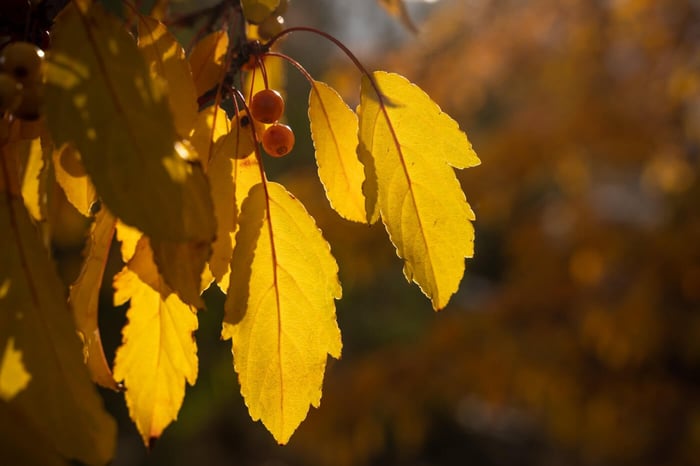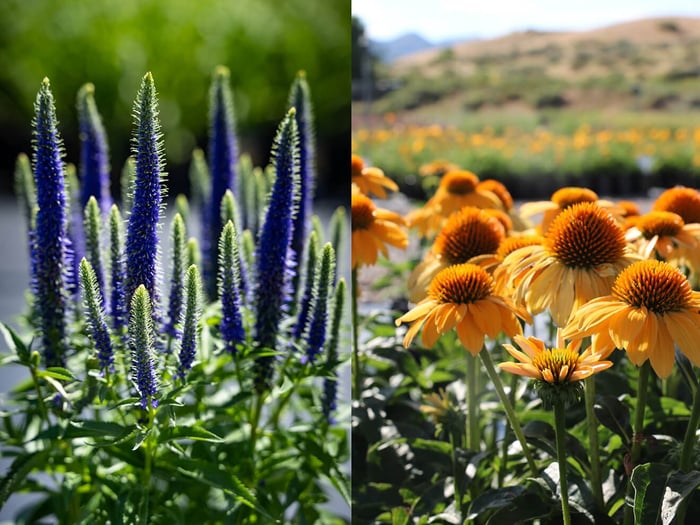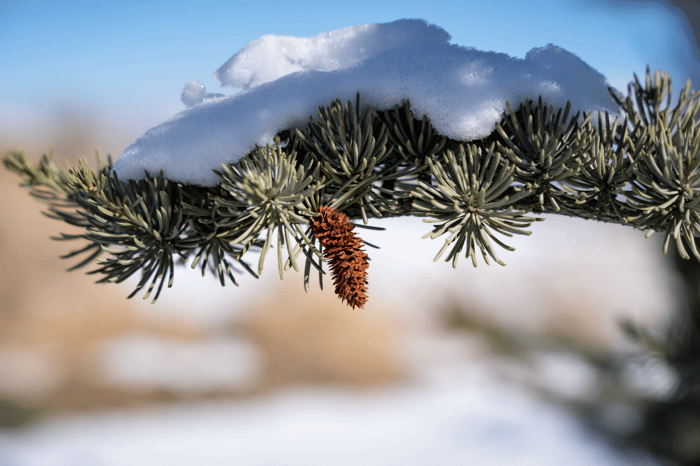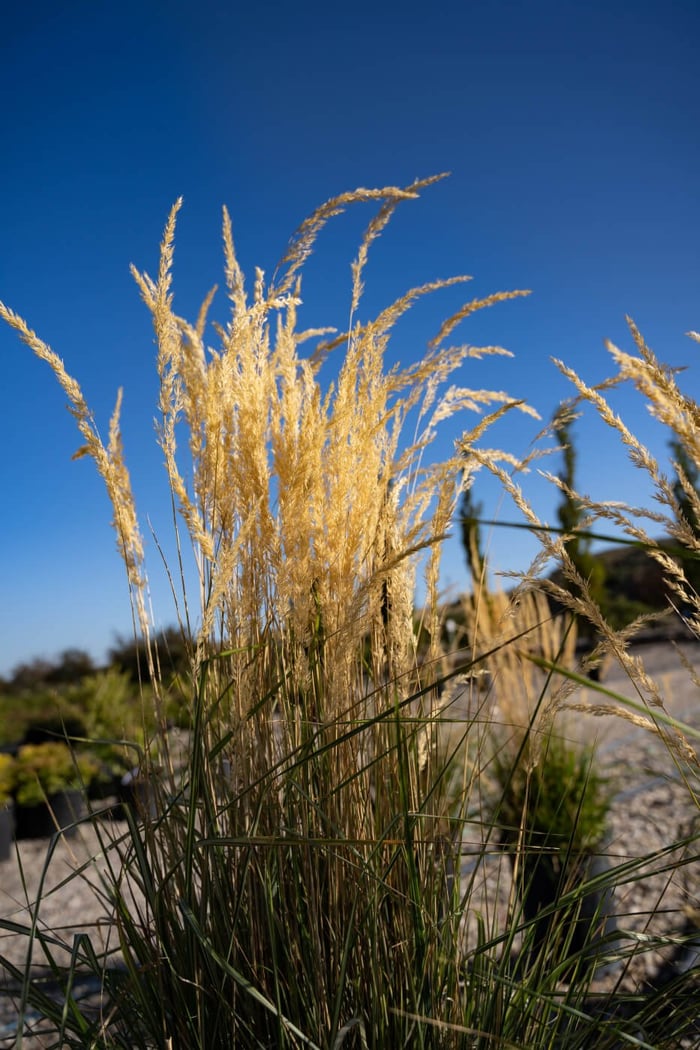Trees are amazing! They purify the air, produce oxygen, reduce CO2, help lower outdoor temperatures, increase humidity, and they’ve even been shown to improve your mood. Trees offer structural support to your landscape, give your yard a sense of balance, rhythm, and motion, and provide a backdrop for your ornamental shrubs and perennials. In fact, a tree often act as the focal point for your garden. Given all that trees can do, you may want to add some to your yard. But which trees are the best?
Determining the best trees for your yard is completely personal, but it helps to know what you’re looking for in a tree. The possibilities are astonishing, and yet most people are only familiar with a handful of trees. Once you've determined what you're looking for in a tree, you'll start to discover some pretty impressive options. Let's get started.
What do you want?
Maple trees that turn red in the fall are in high demand everywhere. However, most maples struggle with Utah's soil pH. They develop iron chlorosis, lose color in their leaves and become weak. The maple in this photo is a rare exception. There are locations in Utah with soil that can support maples, but it pays to test your soil before you plant a maple. If you’re looking for red fall color, you may decide to use other trees. Frontier elm trees develop a striking deep red color in the fall.
Do you want shade trees? Typically, we think of deciduous trees when we talk about shade trees, but conifers can also cast shade. Shade trees are usually larger trees with a broad canopy, but if your yard is small, a columnar tree may provide adequate shade for your space. If you plant deciduous shade trees on the south side of your house, they'll cool your home during the summer months. In winter, when the tree has lost its leaves, the sun can shine through your windows and help warm your home. This alone can significantly reduce your energy bill.
Focal Point trees make a strong statement in any landscape. The tree shown here is a weeping Eastern Redbud called Lavender Twist. Other weeping Eastern Redbuds include Ruby Falls, Heartbreaker, and Golden Falls.
What about an ornamental tree or a focal point tree? Focal point trees tend to be slightly smaller in the landscape so they can stand out against the backdrop of taller trees or buildings. Of course there are exceptions. The Weeping White Spruce can reach up to 40 feet tall. Ornamental trees are trees with unique features that draw your attention. This could be eye-catching blooms in spring, stunning foliage color in fall, a unique growth habit, or interesting bark and branches that stand out in winter. Sometimes you’ll find a tree that provides many of these elements. Weeping Eastern Redbuds, such as Ruby Falls or Lavender Twist, come to mind.
Conifer trees bring a powerful punch to your yard. You can find conifers that fit almost any space and blend nicely into any landscape design. Trees shown here are: 'Hoopsii' Colorado Blue Spruce, 'Pendula Bruns' Serbian Spruce, Weeping Norway Spruce, and 'Gold Cone' Himalayan Cedar. Other great conifers include, Spartan Upright Juniper, Taylor Upright Juniper, 'Blue Arrow' Rocky Mountain Upright Juniper, and Frank Columnar Austrian Pine. Check out our catalog for other amazing conifers.
Ornamental trees don’t need to be deciduous. In fact, many conifers offer stunning interest all year long. Often the decision between deciduous trees and conifers comes down to color and texture. Conifers offer a variety of textures, from sharp, glossy needles, to soft foliage that sways in the breeze. And the colors are outstanding, including deep greens, blues, yellow-gold, and chartreuse. It isn’t uncommon to find more than one of these colors on the same tree, especially during spring when new growth is sprouting. And very few plants offer better protection for birds and small animals than conifers.
What about edibles? Fruit trees are a wonderful way to provide some shade and a sweet, natural treat. There’s a sense of security that comes from knowing that the tree in your backyard can help feed your family. Fruit trees can act as ornamental trees with their spring blossoms and colorful fruit, and they will attract birds and pollinators to your yard.
Privacy screens are often essential elements in your landscape. The trees shown here include Spartan Upright Juniper, Cologreen Upright Juniper, Wichita Blue Upright Juniper, Japanese Euonymus, and Smoke bush.
Looking for privacy?
Privacy may be the biggest reason people buy trees. Because most conifers grow thick and keep their foliage year-round, people often use them as a screen between their yard and their neighbors. Great options include junipers, cedars, fir, spruce, and pines. Thick, columnar, deciduous trees such as oaks, hackberries, hornbeams, and serviceberry trees are great for privacy as well. The real magic happens when you combine them for the ultimate contrast of color and texture. The same trees you would use as a privacy screen will work well to block the wind.
Trees to avoid.
Years ago, people planted Lombardy Poplar trees in Utah as a buffer from the wind. These trees have a narrow canopy and an upright shape but they are easily stressed in our climate. Stressed trees weaken and die quickly (often within 5 to 15 years) due to stem cankers. Although they grow fast, they require a lot of water, are prone to pests and disease, tend to be messy, and send up shoots at their base and into your yard. Since we're talking about the BEST trees for your yard, let's go ahead and cross that one off your list.
The same can be said for Quaking Aspens. Although everyone loves them, they belong at high altitudes in the mountains and not in neighborhoods on the valley floor. We want you to be thrilled with your yard for decades to come. That includes having trees that don't encroach on your neighbors.

Consider the strength of your tree. Trees you purchase at the nursery will be too small for your kids to climb, but your grandchildren may someday (and the neighbor kids might when you aren’t looking). It may be good to know how sturdy your tree will be and if it’s prone to breaking under stress. Fast-growing trees are often weaker than slow-growing trees. It’s wise to keep kids out of willows, maples, and redbuds, especially in the first several years of growth. Of course, children are far less of a concern than heavy, wet snowfall and high winds. If you are concerned about brittle trees, talk with us or one of our designers.

What shapes appeal to you?
Your tree's growth habit refers to the shape it forms as it grows—vase, columnar, sprawling, rounded, pendular or weeping. It’s amazing when you find a yard that incorporates trees of all shapes and sizes in the landscape, but usually you need to decide what’s best for your space and your creative vision.
Always purchase trees with their mature height and width in mind. You would hate to plant a cute little tree this year only to remove it later because it has outgrown its space.
When you’re designing your planter beds, consider how much space your trees will take in your yard. Will your tree provide the conditions for a shade garden in the future? Will it crowd against the fence?

How does it tolerate your soil and water?
We probably should have mentioned this one first. Knowing your soil structure and pH level can save you a lot of headaches down the road. Test your soil before you shop for trees. Different trees respond differently to soil depending on its structure and pH level.
Because ancient Lake Bonneville was so large, it had its own currents that flowed within the lake like large rivers. These currents distributed sediment differently throughout the lake bed (the Great Basin Region). So, the soil in your yard may be very different from the soil in your friend’s yard just a couple of miles away. The trees that grow in your friend's yard may struggle in yours because of the differences in soil structure.

Now for the water. If you don’t have secondary irrigation water and use culinary water for your landscape, you should have very few issues, if any, related to your water. However, irrigation water in Utah is sourced from wherever it’s available. Usually, mountain lakes and reservoirs offer decent water for your plants. Some are cleaner than others, so it never hurts to have your water tested. Water from Utah lake, however, is loaded with dissolved solids that will actually kill many of your favorite plants. Be sure to purchase plants and trees that can handle the conditions Utah Lake water will create in your yard. You can usually determine your secondary water source by looking at your water bill, or by contacting your local municipality.
Our online catalog has a section devoted solely to plants that tolerate water from Utah Lake.
We hope you’ve found this list of considerations helpful. As you answer these questions, you will be better prepared to find the best trees for you. Even if these questions don’t lead you to a specific tree, they may at least direct you away from potential problems. With that information in mind, you can shop on our website more confidently and discover all sorts of wonderful trees that will work in your space! Of course, we’re always just a phone call, text, or email away. You can even chat with us directly at ProgressivePlants.com. We’re happy to help answer any questions you may have.










